With the 2018 NHL Scouting Combine behind us, attention will now turn towards the NHL Draft, which will be in Dallas on June 22-23.
But first, let’s have a look at the top 10 performers in each drill at the combine, from NHL Central Scouting.

Wingate Cycle Ergometer Test – The athlete warms up by pedalling at a low resistance for two minutes. When given the start command, the player will perform the following intervals while seated.
Mean Power Output (watts/kg)
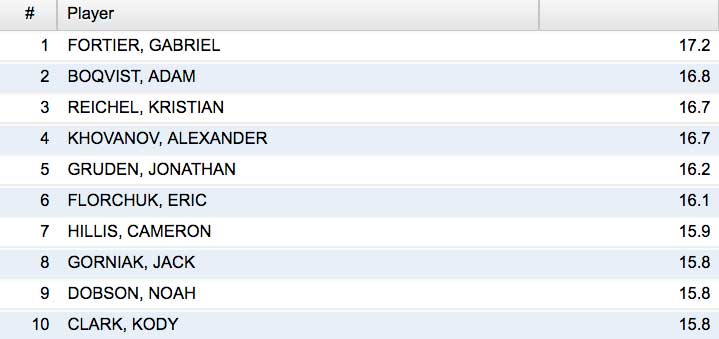
Peak Power Output (watts/kg)
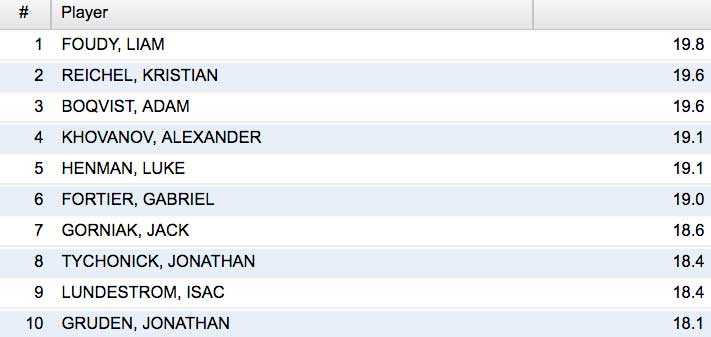
Fatigue Index

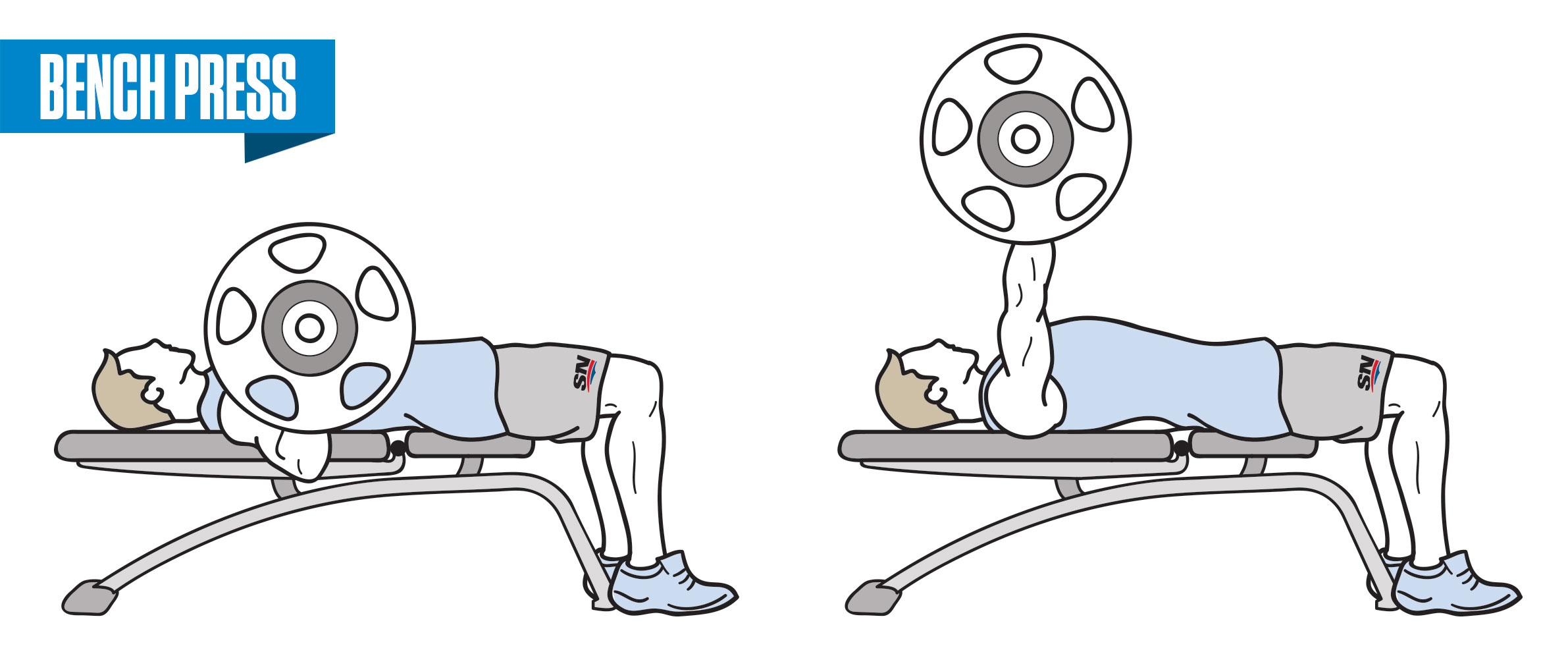
Bench Press – Conducted using a standard padded bench with the athlete lifting 50% of his body weight (pre-determined) utilizing free weights (including the barbell). The athlete lies on his back on the bench and grips the barbell with thumbs approximately shoulder width apart. The buttocks must remain on the bench with the feet on the floor. The starting position is with the arms fully extended. The bar is lowered to the chest, after a slight pause, athlete pushes the bar as quickly as possible until their arms are fully extended. Each athlete will perform three reps at maximum velocity, with a slight pause between each rep at the chest position. A “Gym Aware” device will be used to measure the velocity of the bar and the athlete’s ability to produce power. The reported score will be measured in watts/kg.
50% of Body Weight (Power – watts/kg)


Jump Station (AccuPower Dual Force Plate System) – An AccuPower Dual Force Plate system will be used to objectively measure the direction, strength and timing of the three-dimensional (3D) forces that the athlete produces during hockey related movement. The AccuPower system also captures synchronized video data from two high speed cameras and overlays the 3D force vector produced from each leg. The test will provide immediate feedback allowing teams to assess movement efficiency, physical performance and injury potential.…
Three jump types will be performed: Vertical Jump (with arm swing), No Arm Jump (no arm swing / hands on hips) and Squat Jump (squat start / hands on hips). Each jump test will include three separate maximum effort vertical jumps separated by 10 seconds of rest. The athlete’s best vertical jump height from the three attempts of each jump will be recorded.
Vertical Jump (inches)
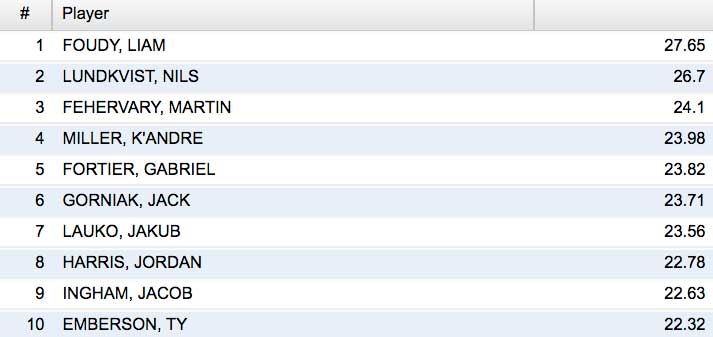
Squat Jump (inches)
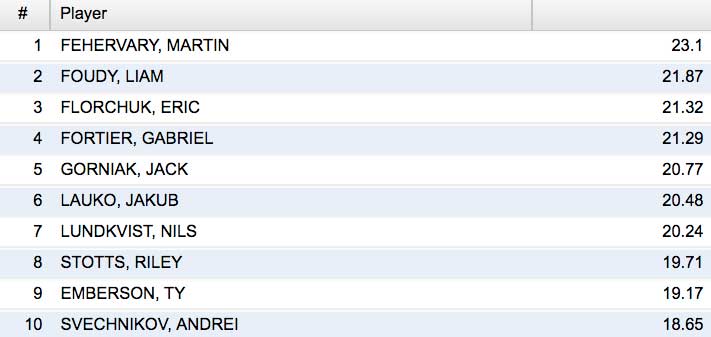
No Arm Jump (inches)

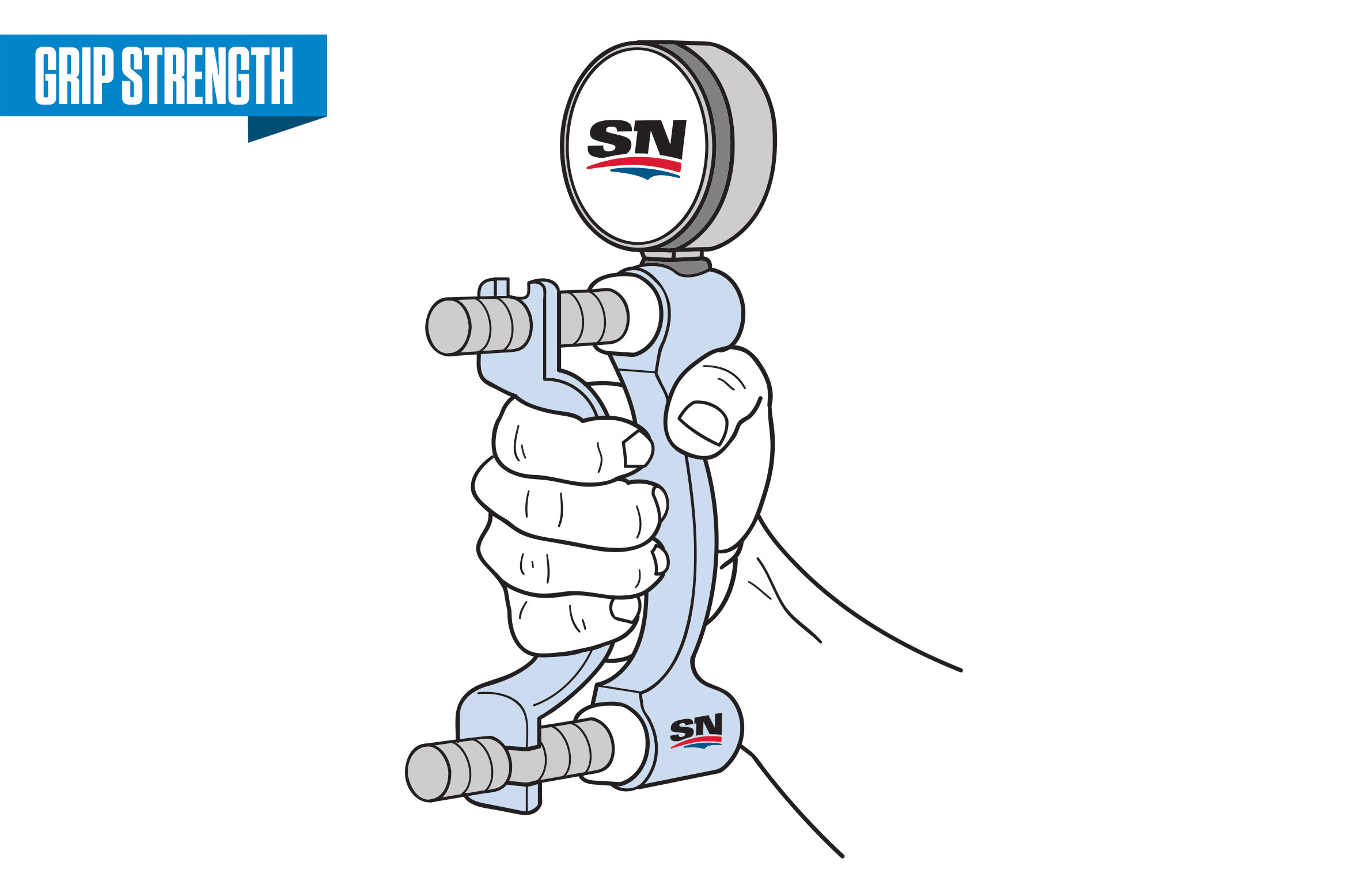
Grip Strength – The athlete adjusts a hand grip dynamometer to his hand size, fully extends his arm and squeezes the dynamometer as forcefully as possible. The test is conducted on both hands.
Left Hand Grip (lb)
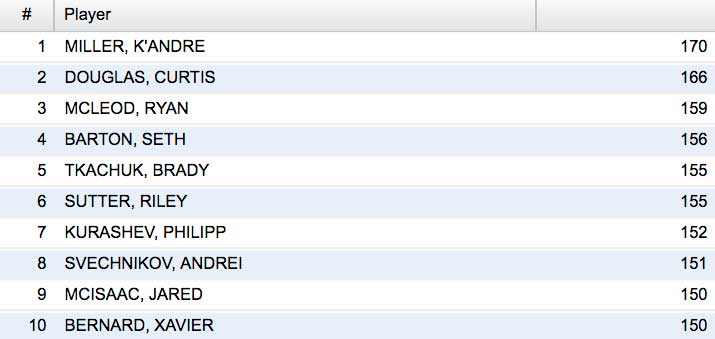
Right Hand Grip (lb)

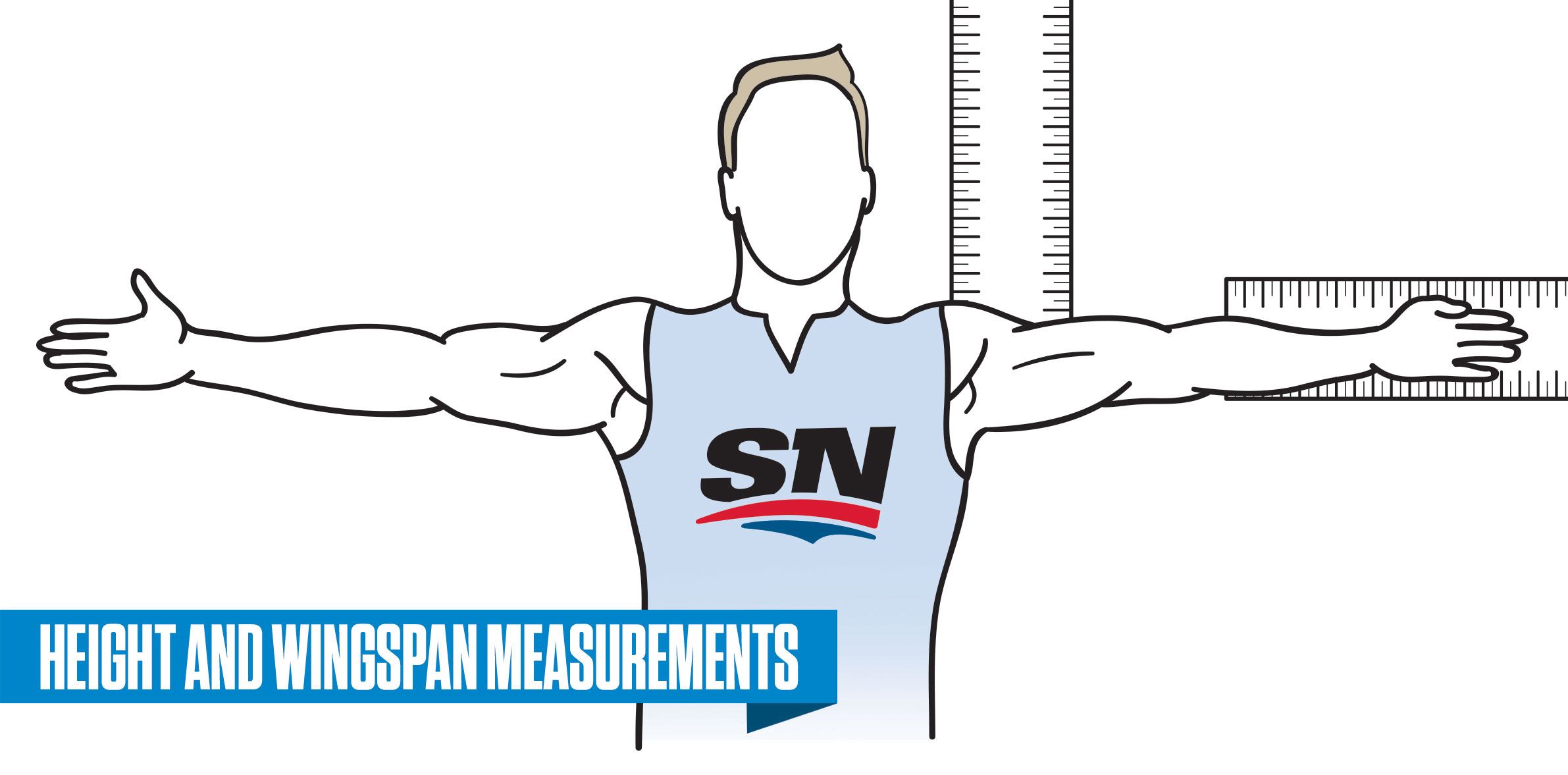
Standing Height – Athlete stands against a wall (barefoot, heels together with the backs of the feet touching the wall) and their height is measured to the nearest quarter inch.
Wingspan – Athlete extends his arms straight out to the sides. Wingspan is measured to the nearest quarter inch from the middle finger tip to middle finger tip.
Wingspan (Inches)
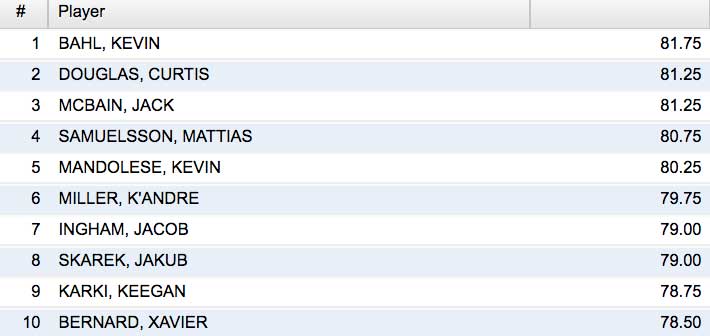

Pro Agility Test – The 5-10-5 yard shuttle (or 15-30-15 feet) evaluates multi-directional speed, agility and whole body reaction plus control. Each player will perform one sequence starting to the right and one sequence starting to the left.
Pro Agility Left (sec)
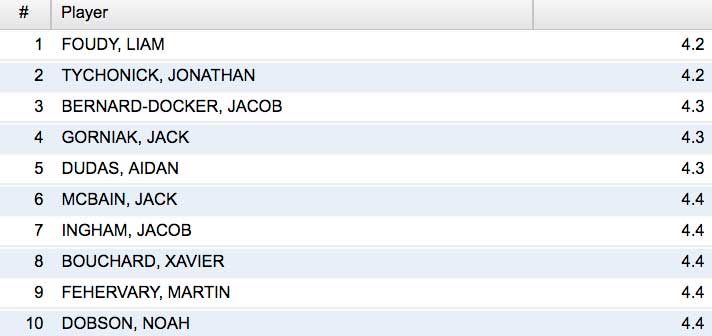
Pro Agility Right (sec)
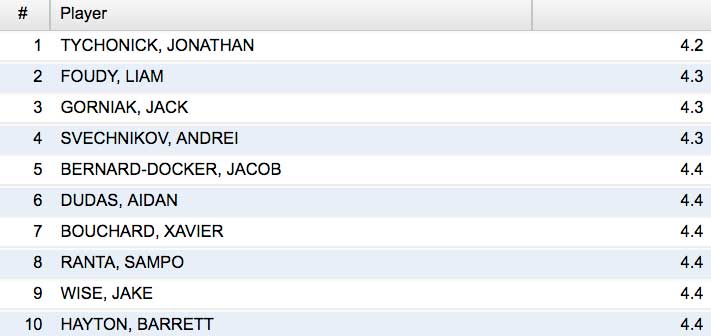
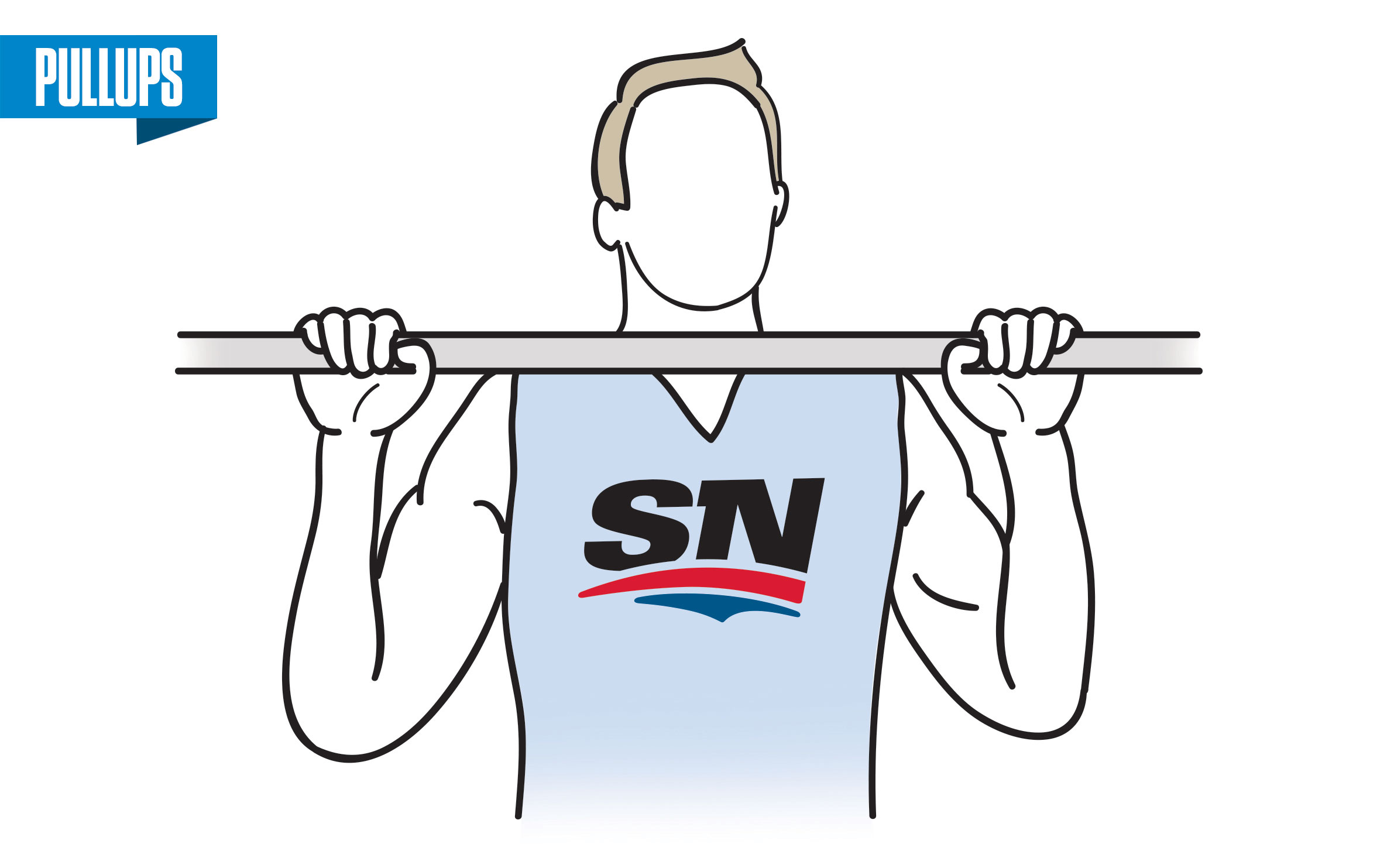
Pull Ups – Athlete does as many consecutive pull ups they can while maintaining the correct technique.
Pull Ups Consecutive (max #)


Standing Long Jump – Athlete stands with feet slightly apart with toes behind the jumping line. Using an arm swing to assist, the athlete jumps as far as possible.
Long Jump (inches)
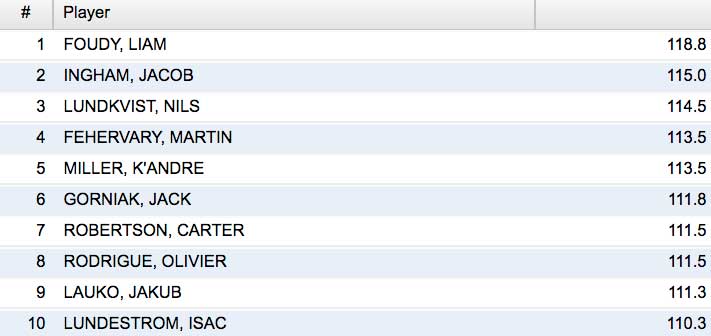
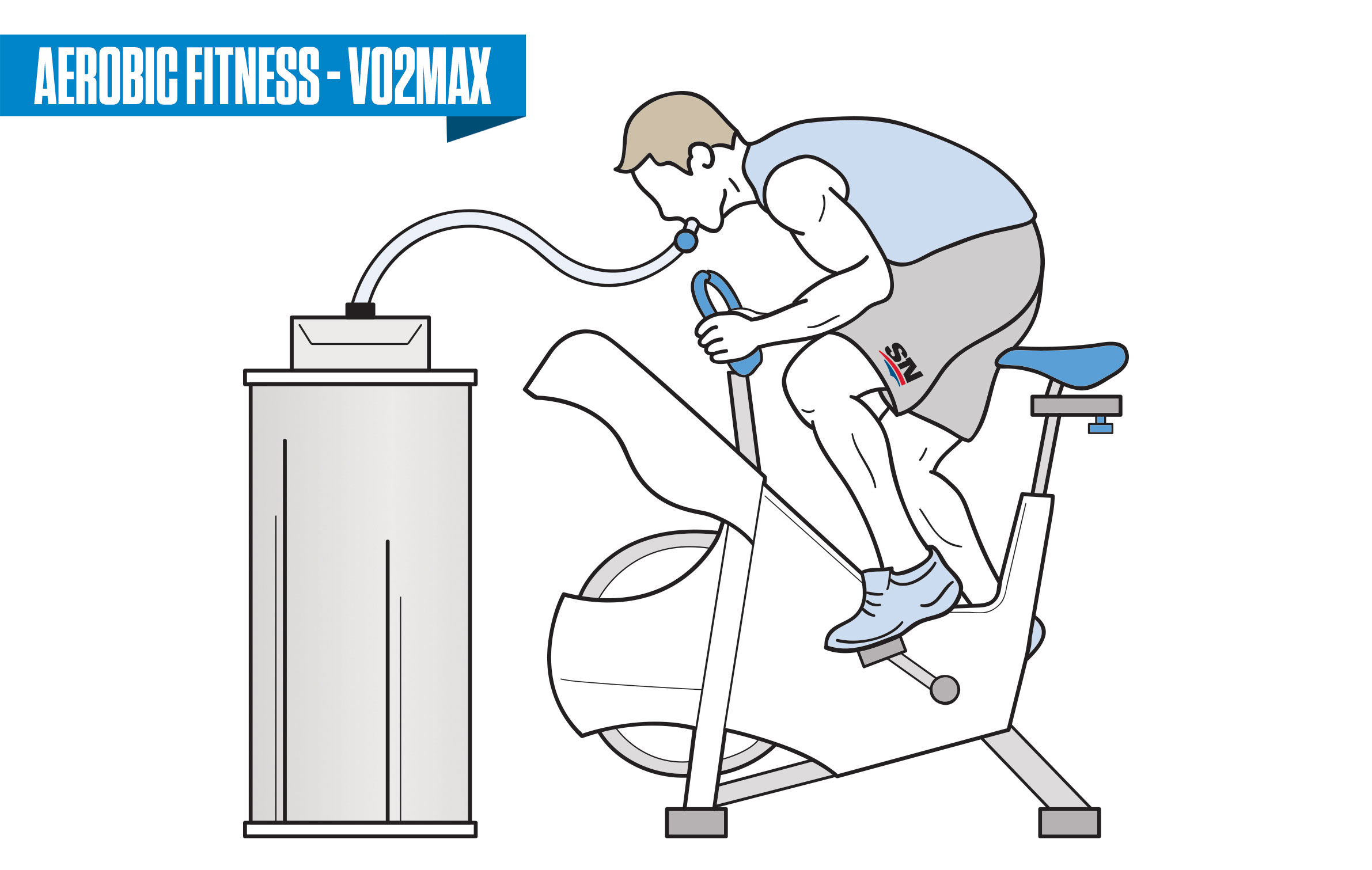
Aerobic Fitness VO2max – Aerobic fitness is assessed by measuring the amount of oxygen utilized (VO2 max) during maximal exercise employing volume determination and analysis of expired air. In addition, heart rate is monitored continuously, providing data for heartrate-based training. This test will be performed on a professional grade spin bike (Watt Bike) cycle ergometer using a Cortex Metalyzer VO2 cart.
The end point is determined by either:
a) the athlete physically stops pedalling
b) the athlete experiences difficulty breathing or chest pain or
c) the appraiser stops the subject because the athlete can no longer maintain the required rpm despite intense effort.
Test Duration

VO2 Max (ml/kg/min)
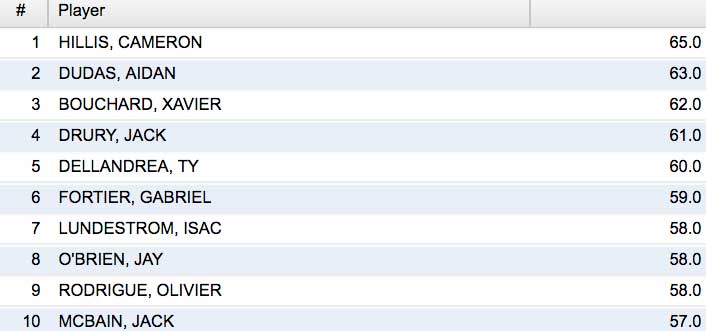
The graphics above were created by Erika Vanderveer. Descriptions of the tests were provided by the NHL.
[relatedlinks]









